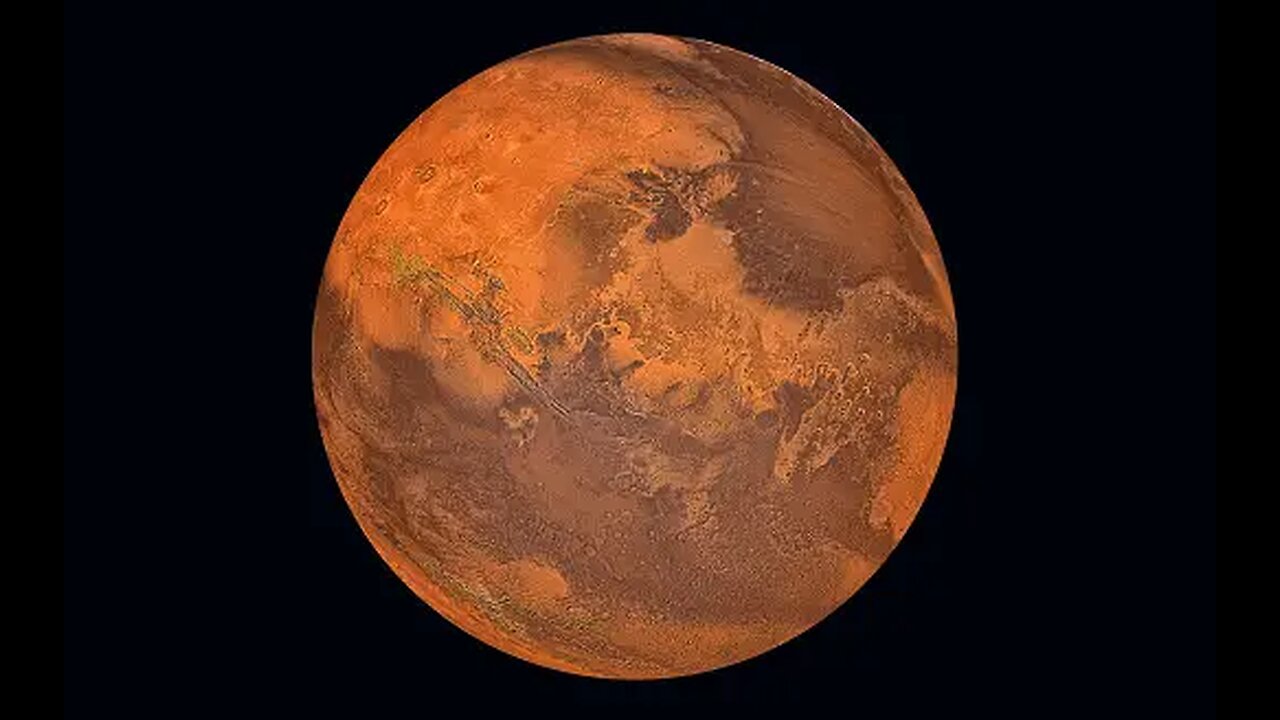Premium Only Content

"Exploring the Mysteries of Mars: NASA's Latest Discoveries"
Mars is the fourth planet from the Sun in our solar system. It is often called the "Red Planet" due to its reddish appearance, which is caused by iron oxide (rust) on its surface. Mars is a terrestrial planet with a thin atmosphere, and it has been a subject of fascination for astronomers and space exploration missions.
Key facts about Mars include:
1. Size: Mars is about half the size of Earth, with a diameter of approximately 6,779 kilometers (4,212 miles).
2. Atmosphere: The Martian atmosphere is primarily composed of carbon dioxide, with traces of other gases such as nitrogen and argon. It is too thin to support human life without life support systems.
3. Surface Features: Mars has diverse surface features, including the largest volcano in the solar system, Olympus Mons, and a vast canyon system called Valles Marineris. It also has polar ice caps made of water and dry riverbeds that suggest the presence of liquid water in the past.
4. Exploration: Numerous missions have been sent to Mars to study its geology, climate, and potential for past or present life. These missions include rovers like Curiosity and Perseverance, which have provided valuable data about the planet.
5. Possibility of Life: Mars has been a target for the search for extraterrestrial life. While no direct evidence of life has been found, scientists continue to investigate the planet's history for signs of past habitability.
6. Human Exploration: Mars has long been a target for human exploration and potential colonization. NASA and other space agencies are actively researching and planning for crewed missions to Mars in the future.
Mars remains a prominent object of study in planetary science and space exploration, as it holds valuable insights into the history and potential for life beyond Earth.
-
 27:39
27:39
Crypto.com
3 hours ago2025 Live AMA with Kris Marszalek, Co-Founder & CEO of Crypto.com
39.7K3 -
 LIVE
LIVE
TheAlecLaceShow
1 hour agoMAGA Pushback Against Flag Burning EO & 600K Chinese Students | Cashless Bail | The Alec Lace Show
68 watching -
 1:09:18
1:09:18
SGT Report
15 hours agoBIOHACKING 101: MAKING BIG PHARMA IRRELEVANT -- Dr. Diane Kazer
21.5K18 -
 LIVE
LIVE
JuicyJohns
4 hours ago $1.35 earned🟢#1 REBIRTH PLAYER 10.2+ KD🟢
112 watching -
 LIVE
LIVE
The Mel K Show
1 hour agoMORNINGS WITH MEL K - The Future of the Constitutional Republic: Local Action for National Impact 8-26-25
732 watching -
 LIVE
LIVE
The Shannon Joy Show
3 hours ago🔥🔥TACO Trump Rug Pulls AGAIN - Deploying His Fascist Police State In Red States NOT Blue.🔥🔥
214 watching -
 29:43
29:43
Grant Stinchfield
2 hours agoBig Pharma’s Dirty Secret: It Writes the Medical School Curriculum
164 -
 1:10:58
1:10:58
vivafrei
4 hours agoBanning the Burning of the Flag? Raja Jackson Assault & Some Insanely Stupid Takes! NYC Chems & MORE
29.1K34 -
 LIVE
LIVE
LFA TV
6 hours agoLFA TV ALL DAY STREAM - TUESDAY 8/26/25
4,497 watching -
 1:01:38
1:01:38
Trumpet Daily
1 hour agoTrumpet Daily LIVE | Aug. 26, 2025
4.56K